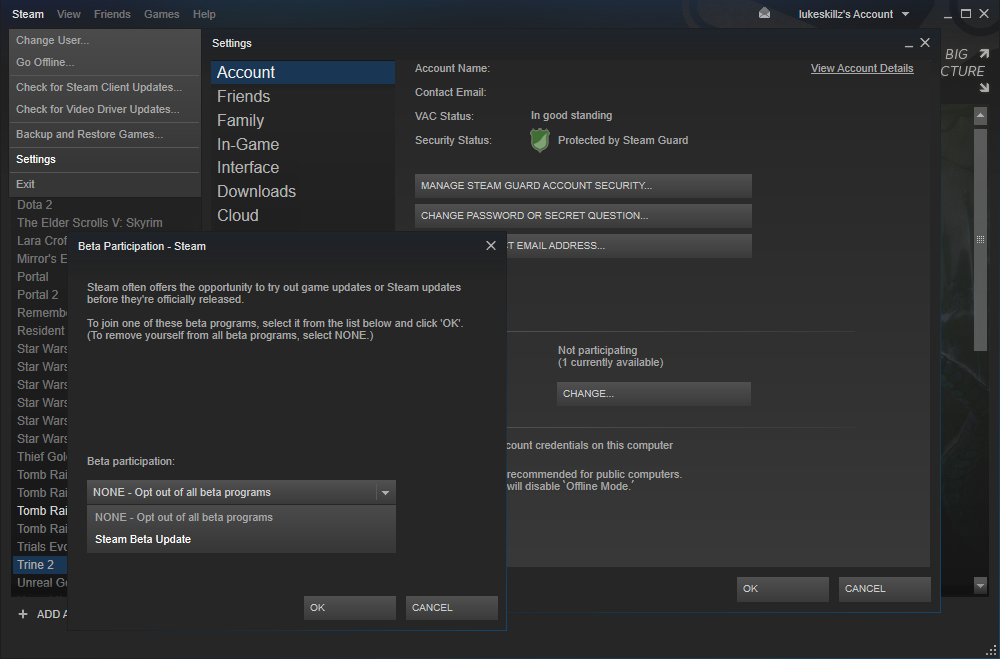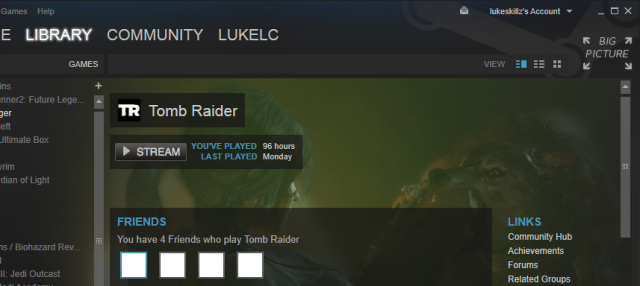Ever since OnLive took the world by storm offering instant access to triple-A video games by means of YouTube-like streaming video and controller input data other companies have sought to turn game streaming into a real industry and simultaneously grab their share of the pie in the process. But while the technology’s roots may lie in giant servers feeding games long-distance for a fee—often a recurring one, at that—as time has gone on a necessary shift in focus has taken place from the large-scale to the small. Though there is still a place for subscription-based game streaming services to some, most would rather take control of the streaming process themselves, using a gaming PC as the host and any variety of other devices as the clients just around their own homes. We’ve seen lots of attempts at this, from little-known developers like Splashtop and big names such as NVIDIA alike, but to date streaming has been something of a pipe dream—or is it pipeline dream—severely limited by current wireless internet technology.
Then came Valve out of left field, as Valve is wont to do. It’s no secret the public favorite of gaming wants to turn Steam into a platform in its own right, and over the last couple of years we’ve really seen the service evolve in that direction. On consoles Microsoft has Smartglass and Sony has Remote Play and Playstation Now, so it only makes sense for Valve to adopt some kind of remote solution for Steam as well. However, this is not a matter of playing catch-up. In fact, Steam In-Home Streaming is the first streaming solution you’ll actually want to use.
Setup
At this point you’ll need to be using the beta version of Steam to access it, but opting in is a pretty painless process. In your Steam client go to Settings, and on the ‘Account’ tab under ‘Beta participation’ click ‘Change’. Then in the window that appears, change the drop down box from ‘None – Opt out of all beta programs’ to ‘Steam beta update’. Save your changes and Steam will restart and download the latest beta. You’ll know you’ve succeeded when your desktop/taskbar icon changes to a pretty fetching blue orb variant of the regular Steam logo.
After that, getting your In-Home Streaming on is about the simplest process we’ve yet seen for streaming solutions. Simply leave your host PC running Steam, log into your Steam account on the PC you want to stream to, let the beta update automatically apply to it if necessary, then just choose the game you want to stream from your library like you’re launching it normally. Any game not installed locally on the client PC will change from the usual ‘install’ button to a ‘stream’ button instead (or if installed on both will give you the option via a dropdown menu).
You’ll also notice your host PC’s non-Steam games added to the library will now be visible on the client, and yes, you can stream those too. That means anything you can create a shortcut for in Steam you can stream. Even desktop apps or your desktop itself (with a little trickery) are fair play, and that’s pretty awesome considering it’s all for free.
Performance
But of course, what everyone wants to know is how well Steam In-Home Streaming performs. I’ll be honest: I didn’t have high expectations. In my experience game streaming has been nothing but a laggy mess that merely serves as a proof-of-concept. Any attempt at actually sitting down and seriously playing a game remotely has been an abysmal failure.
Then I booted up Tomb Raider (because it’s not an Xbox One exclusive) over Steam In-Home Streaming. And I promptly had to pick my jaw up off the floor.
FPS was incredibly consistent and latency was the closest thing to nil I’ve ever seen. Even holding my laptop up to the PC screen where the game was actually being rendered revealed almost no delay or framedropping between host and client. As for visual quality, well, witness for yourself:
Client PC
Host PC
This is with the game running at my laptop’s native resolution of 1366×768, but things worked much the same at my desktop PC’s resolution of 1680×1050. For fairness, here are the other specs of both PCs in my test case:
Host PC:
- 3.5GHz AMD Phenom II X4 965BE
- 12GB DDR3 RAM
- NVIDIA GeForce GTX 770 4GB
- Windows 8 Pro 64-bit
Client PC:
- 1.6GHz Intel Atom N330
- 2GB DDR2 RAM
- NVIDIA ION (integrated)
- Windows 8 Pro 32-bit
In any case, the quality Valve has managed here is simply staggering. While there are some compression artifacts to be seen, in motion they come off as little more than the film grain effects some games include by design. I felt more like I’d bought a new laptop than like I was playing a game remotely.
Configuration
Then everything crashed. My newfound game streaming bliss, interrupted by my desktop’s WiFi adapter crying uncle and tragically buckling under the weight of all the data Steam was trying to push through. But that’s ok, because in true PC fashion Valve has given gamers the power of choice. By visiting the In-Home Streaming tab in your Steam settings you can configure the bit rate of the stream and enable or disable some nifty features for both the server and client machines, all in one place. In my case I checked ‘Enable hardware encoding’ and ‘Prioritize Network Traffic’ and set a 5MB/s bandwidth limit to keep from overwhelming my WiFi adapter again. Been smooth sailing ever since.
Issues
Well, almost—when it works, at least. Unfortunately, at this point it seems Valve’s magic only does work on certain subjects. In my time with In-Home Streaming several titles proved unstable, freezing on either the host side, client side, or both. That’s not to say the service felt unreliable, though. Games that didn’t work demonstrated it pretty much straight away, and anything that actually made it in-game stayed in-game without fail. I remind you this is still beta territory. There doesn’t seem to be any rhyme or reason to which games will and won’t work, and it’s possible different hardware and software configurations will produce different results, so you’ll just have to give each game in your library a try and see how it goes for yourself.
Conclusion
There’s no telling how or when Valve will expand streaming support to all games in the store, or even most of them, but the good news is it works for a lot of them, and when it works it really, really works. Steam In-Home Streaming may be getting its introduction to the world with the least amount of fanfare, but after seeing what it can do I could forget about the likes of any other streaming option and be a happy gamer. It’s free, relies on your local PC and games you actually own in some measurable form, and blows away everything else in terms of performance. At this point in time only Windows is supported as a host for streaming, but Windows, Mac, and Linux can all act as streaming clients, and support for Mac and Linux hosts is in the works. Valve has also ambiguously promised that client support for ‘more systems’ will be added with time, likely either referring to Steam OS machines or iOS and Android devices—maybe both. Steam OS seems like too much of a given to need any announcement.
Whether you’re a gamer or not, if you’ve ever thought it would be nice to stream content of any sort from one PC to another, give Steam In-Home Streaming a try. Without a doubt it is the highest performing solution out there right now. I can just picture Gabe Newell flying off with a cape, another technology saved.












